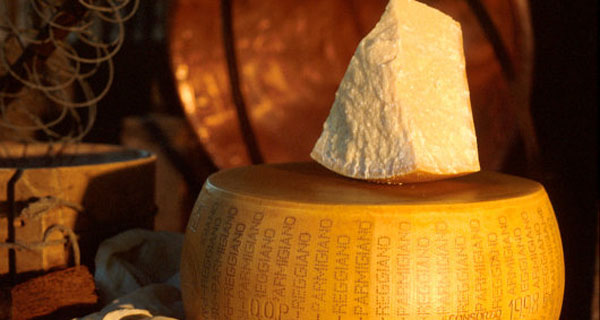
In 2014, global production of fake parmigiano reggiano and grana padano exceeded production of the originals for the first time, provoking a fall in export value which defies the record levels achieved by made in Italy food produce as well as the positive results recorded for other cheeses, from pecorino to gorgonzola. As the Expo approaches, the alarm has been raised by in the first ‘Dossier on the parmigiano reggiano market: crisis versus opportunity’. The Report emphasises that the blame lies with the unchecked increase of imitations over all five continents, which have now been exposed and made examples of as part of the first exposé operation launched three years after the earthquake that had serious repercussions for production of the most famous Italian cheese in the world. The hashtag #ParmigiAmo was launched on Twitter in support of the initiative.
In 2014, production of imitation parmigiano reggiano and grana padano exceeded 300 million kilos by almost half that again in the United States: from fake vegan parmesan to that produced by the Amish Community, from a parmesan that even won the title of ‘Best Parmesan in the Usa’ to the kit that promises parmesan at home in just two months, not to mention the Cyrillic-translated parmesan produced in Russia after the embargo, Brazilian ‘parmesao’, Argentine ‘reggianito’ and the ‘perfect Italian parmesan’ that is actually produced in Australia. And these are just a few examples of the fake products on the market that are nudging out the original project claims Coldiretti.
While the United States is the number one imitator, with manufacture in Wisconsin, California and New York, imitations are widespread from Australia to South America and even in developing countries. While so-called low quality ‘similgrana’, often sold with imaginative names that deceive the consumer as to their real origins, have reached the European and Italian markets from the Czech Republic, Hungary, Poland, Estonia and Latvia for the most part. Unfair competition for the authentic Parmigiano Reggiano and Grana Padano that have to be using a strict production process.
Coldiretti goes on to explain how a particularly important aspect within this context is the export plan announced by the Italian Government, which for the first time provides for counter-action against ‘Italian sounding’ (the name given to the phenomenon of products that ‘sound’ Italian but are not), which of all Italian food produce at an international level is most rife in the Parmigiano Reggiano and Grana Padano sector.
There is however an opportunity to be seized: the proposed free trade agreement between the European Union and the United States, known as the Transatlantic Trade and Investment Partnership (TTIP). Coldiretti maintains that this is a decisive act for the protection of Italian food produce from counterfeiting and the phenomenon of ‘Italian sounding’, very common in the Usa which represents the largest market for fake parmigiano and grana. Yet Coldiretti concludes by mentioning another even more insidious market: ‘Italian sounding’ by Italians, who import from the most diverse countries to obtain products that they then sell as Italian, without leaving any trace through a dumping mechanism that damages the real made in Italy, as not all food stuffs are yet obliged to indicate their origins on the label.
